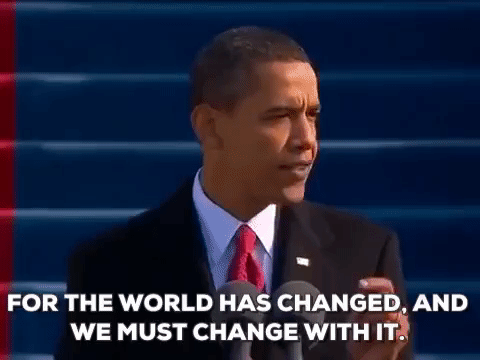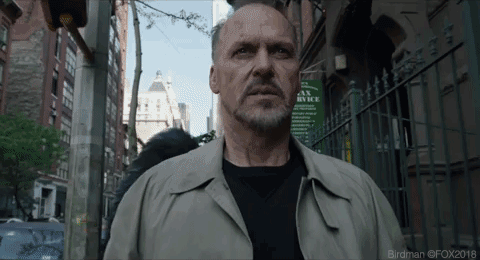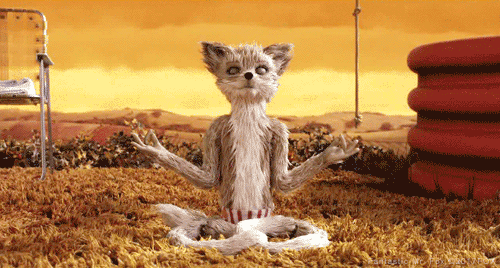Cloud is fundamentally changing the game for many organizations and persons. A new set of rules asks for a new approach, and I’ve seen examples of organizations who block the discussion about taking new approaches to this changed game. In this 4th post I’ll be rounding up the conclusions of my earlier posts about this subject and reflect on them.
How to start change
Successful shapers of organizations can use the value creation structure to start creating products or services for their most valued customers. Show how it’s done, and more important, show the what’s it for. Then start the conversation with the highest level of the organization.
If you can have a conversation about what’s it for, if you can get aligned about what’s it for, it’s most likely that hard working insightful people will come to similar conclusions about what to do next. And that doesn’t require admitting, deciding or acknowledging that the old work was bad. The old work might have been fine, it just had a different what’s it for.

The highest level of the organization has to acknowledge the existence of the value creation structure to implement sustainable change. This could conflict with the company’s culture, and then this is where the talk should be about.
“Make culture a first-class, explicit conversation so that we could then reinvent ourselves and invent new things.”
Satya Nadella
Changing cultures is hard, but as it is the backbone of every organization, it should always be a subject of discussion. Especially in organizations in which the culture more or less stems from the Industrial Era where people were expected to do what they were told, to show up in time at work, where people await instructions. And where people who are innovative, creative, ask questions and who interrupt, are shunned. But you can see the contradictio in terminis here.
“A winning culture means moving from a ‘know it all’ mindset to a ‘learn it all’ one.”
Satya Nadella
When change is not an option
In every situation you have three options: change, accept or leave. If you can not accept the situation and change is not possible, you still got an option left. You can take Buckminster Fuller’s advice:
“You never change things by fighting the existing reality. To change something, build a new model that makes the existing model obsolete.”
Buckminster Fuller
But why is change not an option?
Then I still have one question left: what is the real reason why the people at the highest level of an organization don’t want to talk about changing a culture which is built on the needs of the Industrial Age?
What makes people not willing to create an environment where creativity is stimulated, where creative cooperation is the way of work, where they listen to the smart people they hired to understand what they need to do, where the focus lies on creating value and where empathy leads the way to success?
Who would say no to this? There seems to be no logic reason, so the cause has to be found somewhere else. Somewhere deep inside us humans.
The difference between humans and animals is that a human has the ability to self-reflect and be proactive instead of solely respond to instincts. We humans can make a considered choice, and do things differently the next time.
Humanity also has a problem animals don’t have: we have an ego. The ego is our identification with our past, our context, our culture. Attachment to the ego creates the dysfunction that leads to anger, jealousy, and unhappiness. It creates a so called human pain-body, which can be passed on for generations.

The powers to resolve a pain-body are empathy – builds people into groups – and living in the moment – dissolving the past, context and culture. Eckhart Tolle calls this the awakening which leads to a new state of consciousness and the following of the path to a truly fulfilling existence.
“Humanity is now faced with a stark choice: Evolve or die. … If the structures of the human mind remain unchanged, we will always end up re-creating the same world, the same evils, the same dysfunction.”
Eckhart Tolle
To get others to awake, the awakened can lead by example. The ones I can think of are Oprah, Satya Nadella, Seth Godin, Barack Obama. And closer to my home Ahmed Aboutaleb and Eberhard van der Laan. And some I worked with, Rene Claessen and Peter Langenbach.
From bad experiences to empathy
Before starting his now 22-year-long tenure at Microsoft, Nadella was interviewing for a job and was asked, “What will you do if you see a baby on the street crying after having fallen down?”
“I answered thinking this is some trick question,” Nadella said. “Maybe there is some algorithm that I’m missing and said, ‘I’ll call 911’ only to have that manager get up and walk me out of the room saying, ‘That’s an absolute bullshit answer.'” The manager then told Nadella, “if you see a baby falling down, you pick them up and hug them.”
“And I was devastated because I remember thinking about it and I said, ‘How could I not get that?'” Nadella said.
“Most people think empathy is just something that you reserve for your life and your family and your friends, but the reality is that it’s an existential priority of a business,” Nadella told Bloomberg in 2017. “I think empathy is core to innovation and life’s experience.”
In 2016 Joe Biden – when he received the Medal of Freedom – described how Obama became the man who he was: not driven by his ego but by empathy. He used a quote from the Irish poet Seamus Heaney:
“You carried your own burden and very soon your symptoms of creeping privilege disappeared.”
Seamus Heaney
Conclusion
With this last quote I’ve come to the end of the 4th blog post which contains my Root Cause Analysis (aka my brain muscle exercise) to understand how organizations respond to a changing world, and what the reasons could be.
One conclusion is that organizations needs shapers to respond to changes in their environment, and that shapers can use the value creation structure to set examples and to show the whats it for. And to create sustainable change a fitting culture is needed.
Another conclusion for me is that the (IT) world needs more leaders and people like Satya Nadella. People whose ego doesn’t get in the way of their interaction with others and decision-making. People who worked on their inner struggles, and use this struggle to add positivity to the world. There’s a word for it: empathy.
This post is #4 in a series of 4. The first post was about recognizing patterns in organizations who deal with change. The second post is about the role and characteristics of shapers who create change. The third post is about the three structures every organization has, a good understanding of this this helps in how to create value. This fourth post is sort of a wrap up and tries to answer the question why some organizations don’t adapt to a changing environment.
Input for these blogs came from:
Ray Dalio – Principles; Steven Covey – Seven Habits Of Highly Effective Leaders; Satya Nadella – Hit Refresh; Eckhart Tolle – A new Earth; Buckminster Fuller – A Fuller View; Seth Godin’s blogs and podcasts; Niels Pflaeging
